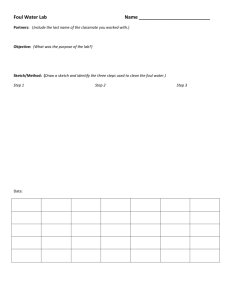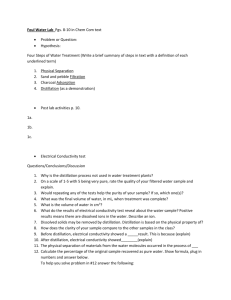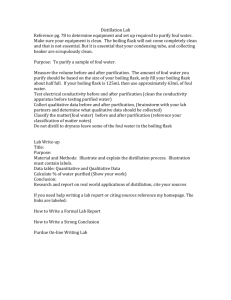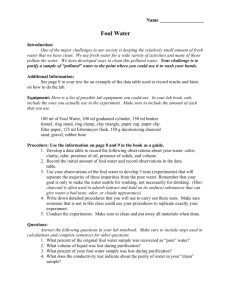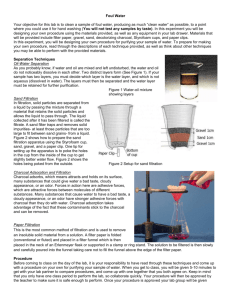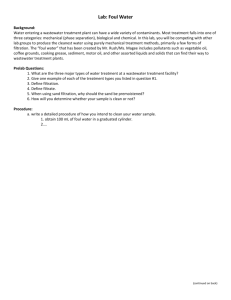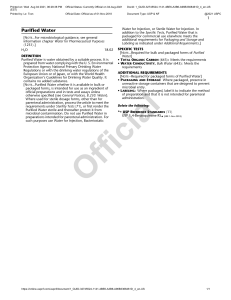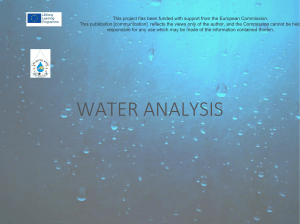foul water lab - sciencewithwatson
advertisement
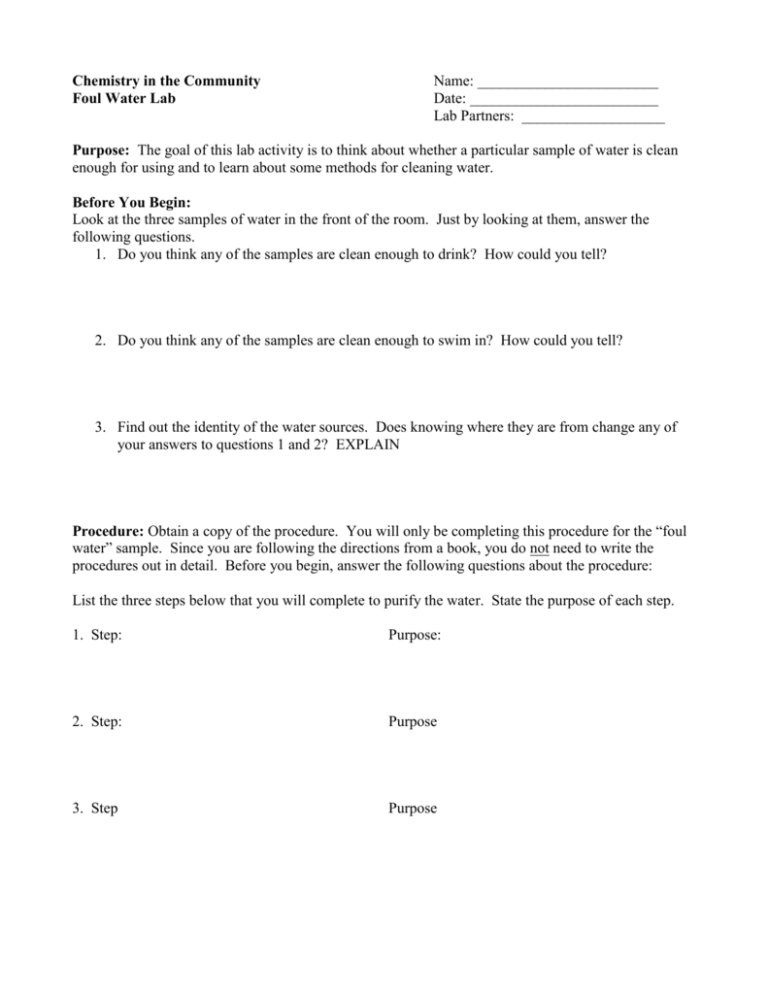
Chemistry in the Community Foul Water Lab Name: ________________________ Date: _________________________ Lab Partners: ___________________ Purpose: The goal of this lab activity is to think about whether a particular sample of water is clean enough for using and to learn about some methods for cleaning water. Before You Begin: Look at the three samples of water in the front of the room. Just by looking at them, answer the following questions. 1. Do you think any of the samples are clean enough to drink? How could you tell? 2. Do you think any of the samples are clean enough to swim in? How could you tell? 3. Find out the identity of the water sources. Does knowing where they are from change any of your answers to questions 1 and 2? EXPLAIN Procedure: Obtain a copy of the procedure. You will only be completing this procedure for the “foul water” sample. Since you are following the directions from a book, you do not need to write the procedures out in detail. Before you begin, answer the following questions about the procedure: List the three steps below that you will complete to purify the water. State the purpose of each step. 1. Step: Purpose: 2. Step: Purpose 3. Step Purpose Results: 1. Record your data and observations in the chart below. Color Clarity Odor Presence of Oil Presence of Solids Volume, ml Before Treatment After Step 1 After Step 2 After Step 3 Based on the water uses that we listed in class, decide which uses are appropriate for the water after each step. Possible appropriate uses 2. Describe your final purified water sample: Color: Clarity: Odor: Other details: 3. What was the volume of purified water recovered? ____________________ What total volume of foul water did you start with? ____________________ 4. Describe the results of the conductivity test. (What substances were tested and what did you observe?) Questions and Conclusions 1. Why did the method that you used to separate the oil and water work? Could you separate any two liquids using this method? 2. What did the conductivity test reveal about the water sample before and after the distillation procedure? Explain your answer clearly. 3. What was the purpose of the distillation procedure? 4. What percent of the original foul-water sample did you recover as purified water? Show your work. 5. Based on this lab, explain whether you think you were successful in purifying the water sample. 6. Look back at the original three samples of water. Do you think that the process that you did in this lab would be effective for purifying all of the samples? Is this process necessary? Does what you are using the water for change your answer? EXPLAIN. 7. Why is distillation NOT used to purify water in municipal water treatment plants? 8. Your job is to design a water treatment process to provide water for a town. Based on this lab, what do you think are the three MOST IMPORTANT things to consider in developing your process? EXPLAIN IN DETAIL.
